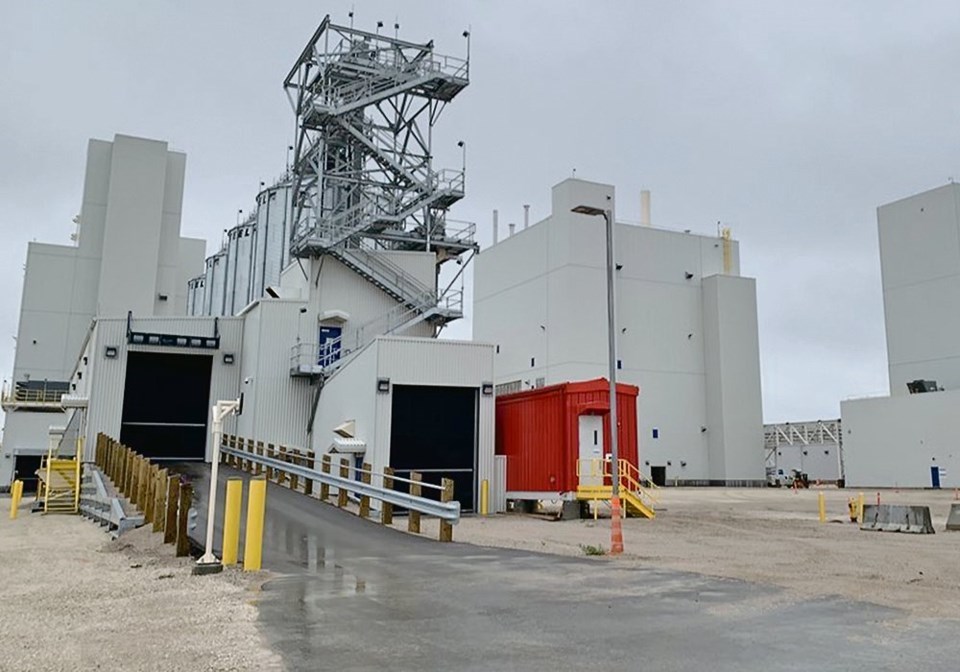PORTAGE LA PRAIRIE, Man. — A thousand things can go wrong when you try to build a $600 million processing plant on another continent.
Roquette took on those risks when the French company decided to build the world’s biggest pea protein plant in Portage la Prairie, Man.
On top of those, the fates cast a few extra challenges Roquette’s way, including:
- a deadly pandemic
- supply chain breakdowns
- a huge commodity market rally
- a wicked drought
But the challenges don’t seem to have rattled the global protein player. The massive plant has been scaling up production for months as it brings hundreds of systems online and into production.
Once it has confirmation from its protein product customers that the plant is making the extractions they need for their various products, more and more peas will begin rolling into the plant, with proteins, starch, hulls and other pea byproducts rolling out of it.
“We’re qualifying it. Fine-tuning the plant. (There are) thousands of systems,” said Roquette public affairs manager Michelle Finley, interviewed in the buzzing command centre for the giant complex.
Around her about three dozen engineers, technicians, managers and production workers oversaw dozens of screens showing the various plant processes that were operating that day. Some screens looked like rectangular plates of well-arranged spaghetti, with electrical lines, pipes of fluids, powders and gases, and processing lines arrayed in the clearest way a human mind could understand.
Some of these people were local. But many were from far away, from places where Roquette operates, including France, Lithuania, Italy, Spain and the United Kingdom.
Bringing this plant online has been an intercontinental effort for Roquette, which would have been a serious undertaking during normal times.
The pandemic made it even more fun.
“We had a support team coming over from France, and they would have to isolate in an apartment in Portage for two weeks,” said Finley.
It also made it hard to just have experts fly in and fly out for specific tasks. Not every bit of installation and inspection can be done by Zoom.
“A lot of this stuff needs to be done in person. It’s tactile. There’s only so much you can do virtually,” said Finley.
Foreign engineers flying in for the most sophisticated system installations might seem like the most exotic challenge of construction in a pandemic, but imagine operating a construction site with 1,600 workers while two gigantic COVID-19 waves so badly swamped the Manitoba medical system that much of the provincial economy was shut down and dozens of severely ill patients had to be airlifted to other provinces in Canada.
Roquette managed to pull it off without an on-site outbreak, with aggressive temperature-checking, masking and social distancing from the beginning.
“Everybody wanted to keep working,” said Finley.
“It was not easy to get everybody on board, but once everybody was there it was easy for everybody to see the value.”
That kept work slowdowns to a minimum.
“An outbreak here would have taken the project way off-track,” she said.
But there were complications, slowdowns and headaches. For example, there are a number of big, red “e-houses,” which are house-sized electrical transformer stations that divide the plant’s electrical draw into specific lines for various systems and machines. Some of those, being manufactured in Quebec, became stranded when that province’s government shut down manufacturing facilities early in the pandemic.
They weren’t an absence you could build around. The plant is composed of many massive units that arrived as a piece and had to be lifted into place by crane. Until those pieces were there, various other pieces couldn’t be put into place.
“These got stuck,” she noted about the components as a chill October drizzle fell outside, cheering the spirits of those anxious about soil moisture for next year’s crop, including those in the administration offices on the northwest corner of the plant campus.
“The plant, as a project, is built like a jigsaw puzzle.”
It’s a big jigsaw. Roquette has developed 67 acres of the 200 it has here, giving it interior space of 200,000 feet, which lies in many forms, including an 11-storey “flour workshop,” loading and unloading facilities, and a packaging plant.
Inside the plant are 60 kilometres of piping; 10,000 truckloads of gravel were used to prepare the site.
Right now, it’s remarkably clean for a grain elevator/mill/packaging/food processing plant. There’s no dust to kick up. There are also almost no people out on the floor, with much of its operations automated and full commercial production still to come.
It feels more like a food processor than a grain facility, with food industry earplugs standard, booties available at a number of the buildings and a focus on wholesome nutrition in the company’s wall-hung artwork.
In a few weeks, more and more trucks will roll in, dumping peas into the automated receiving facilities. More trucks will roll out as well, carrying pea protein, hulls, slurry and other products headed to hungry buyers.
It cost a lot of money to build this place, and it happened as the world endured the worst disease and economic crisis in a century, but the staff throughout the facility seem relaxed, cheery and keen to get on with production.
It’s been a long gestation, but Western Canada is about to see the birth of the world’s biggest plant protein facility. The birth has come without much crying, but after a long, long labour.

